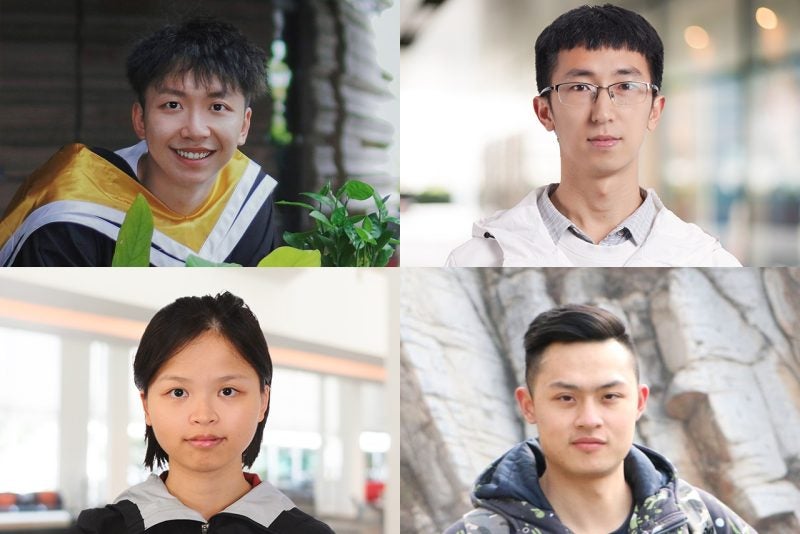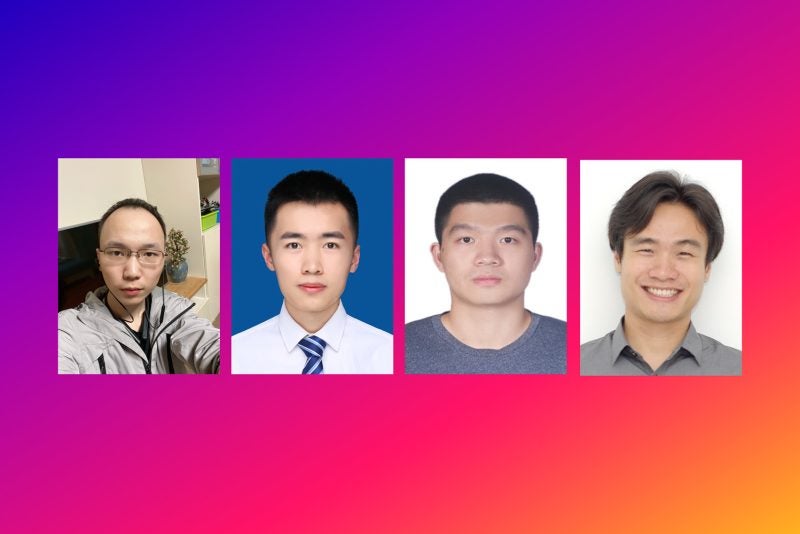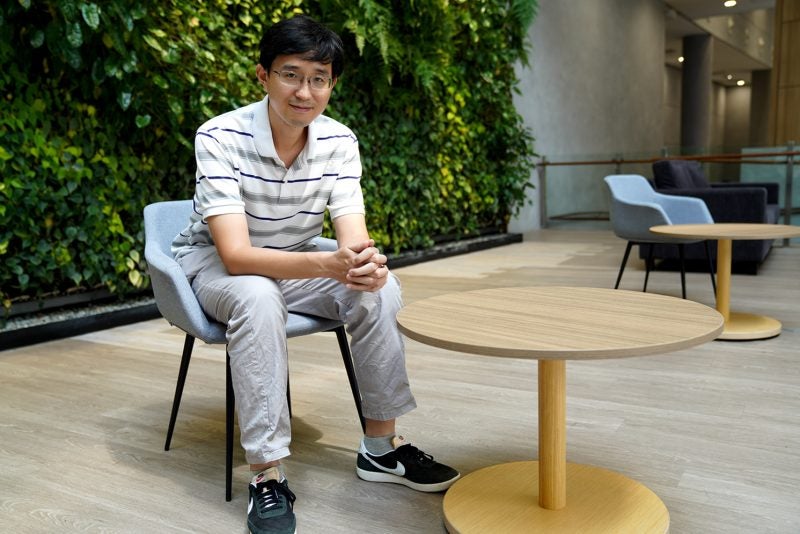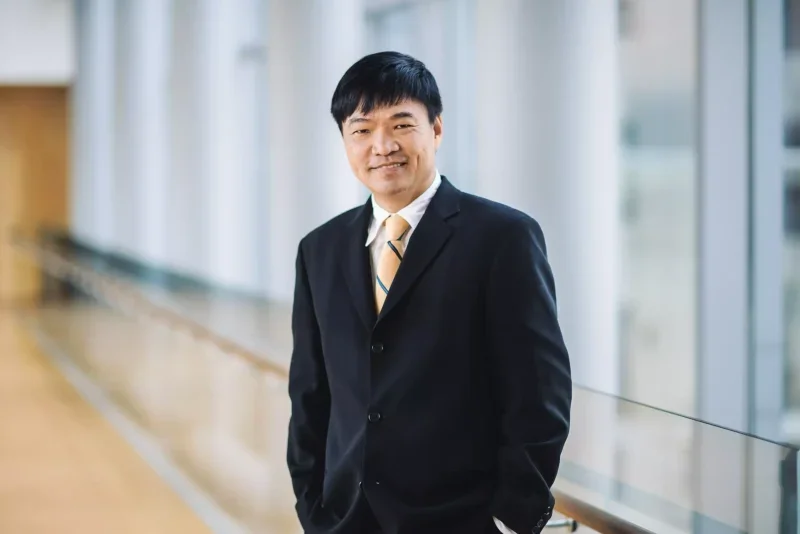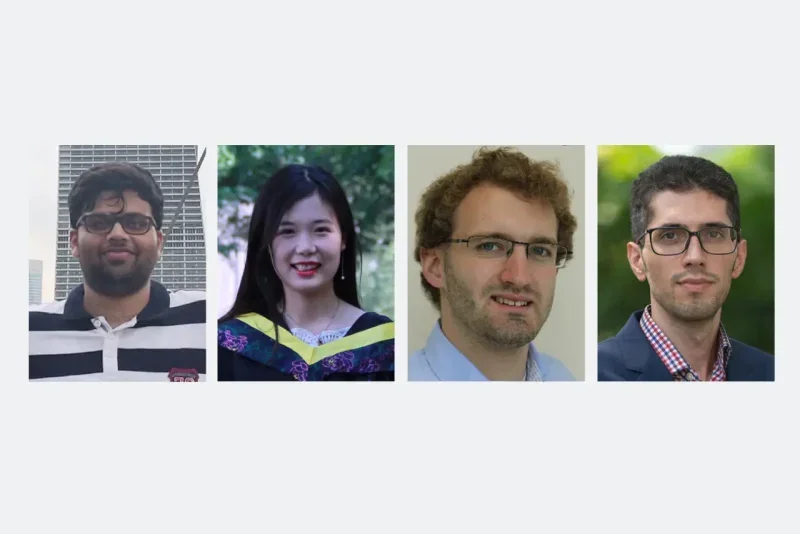8 July 2019 – NUS Computing students and their teams swept up five of six prizes given out at the BrainHack 2019 Award Ceremony held on 14 June 2019. Awards were given out for two competitions: the seventh edition of the Cyber Defenders Discovery Camp (CDDC) and the first Today I Learned (TIL) – AI Camp.
More than 1,500 students from 30 junior colleges, polytechnics and universities competed in the two competitions organised by the Defence Science & Technology Agency. NUS Computing students Christabel Teo, Wong Jun Long and Lim Chun Yong won the champions title at the AI competition, while Information Security students Lee Yu Choy and Ngo Wei Lin won the corresponding champions title at the cybersecurity competition. Incoming first year student Ho Jie Feng and his teammates placed second in the AI competition, and two more NUS Computing teams came in third in both the AI and cybersecurity competitions.
CDDC award winners
- Champions: Information Security students Lee Yu Choy and Ngo Wei Lin, with Singapore American School student Alan Chang and Anglo-Chinese School (Independent) student Calvin Fong
- Second Runners Up: NUS Computing students She Jiayu, Yang Chenglong, Chong Chee Yuan and Calvin Chen
TIL AI Camp award winners
- Champions: NUS Computing students Wong Jun Long, Lim Chun Yong and Christabel Teo, with Nanyang Technological University student Pye Sone Kyaw
- First Runners Up: Incoming Computer Science student Ho Jie Feng, with Carnegie Mellon University student Li Yicheng and Singapore University of Technology and Design students Ragul Balaji and Tenzin Chan
- Second Runners Up: NUS Computing students Gabriel Sim, Teri Aiw and Kennedy Oung, with NUS Pharmacy student Benjamin Lau
Think like an adversary, protect the city

In this year’s edition of the Cyber Defenders Discovery Camp, participants were challenged to think like an adversary and infiltrate into a Smart City’s power supply. Teams competed over a series of five progressive stages to detect and exploit vulnerabilities found in the simulation’s power supply system. A total of 86 teams competed in the competition’s open category for university, polytechnic and international teams.
Beyond playing the role as adversaries, teams also had to learn how to defend the Smart City from cyber-attacks by analysing and reverse engineering forensic artifacts to uncover the attacker’s digital evidence. “The simulation of industrial control systems were extremely challenging and interesting as it gave us insights into what adversaries can do to cause destruction to a nation without strong cybersecurity defences,” said Wei Lin, one of the members from the champions team.
Chenglong, from the second runners team, echoed the same sentiments. “Throughout the competition, we were exposed to many new tools and interesting solutions to tackle the challenges presented to us. The competition has indeed deepened our understanding and interests in cybersecurity,” said Chenglong. “For our team, this was our first Capture-the-Flag contest. It was definitely an unforgettable experience to compete in one of the largest Capture-the-Flag contests in Singapore with like-minded cybersecurity enthusiasts and international competitors.”
Name that pose

In the AI competition, teams were tasked to develop an AI model that can recognise and classify human gestures and poses in images. Participants were given 1,000 images to train their AI models and another 1,700 images to test their models’ accuracy at the judging round. Teams had to use techniques like transfer learning and data augmentation to improve the accuracy of their models.
To give their AI model an edge over the rest of the competition, Gabriel, Teri, Kennedy and Benjamin used additional techniques—such as the use of heat maps and confusion matrics—to understand where their model is going wrong. “With these techniques, we are able to pinpoint which poses tend to be misinterpreted and include targeted photos to increase its accuracy,” said Gabriel on behalf of his team. “For example, if a kungfu crane pose was often misinterpreted to be a sitting pose, we would add in better kungfu crane pose photos to the training data.”
This helped the team to specifically target areas of improvements their model needed. “We did not blindly add in new photos like other teams did and so it prevented our AI model from becoming over-trained. Our strategy helped put us on the leaderboard for accuracy.”
First runners up winner Jie Feng and his team distinguished themselves from the competition by using a preprocessor—DensePose—to extract the image subject’s 3D information and provide a clean background for the AI model. “With DensePose, we could train our model without transfer learning,” said Jie Feng. “We are the only winning team to use a preprocessor and this allowed us to gain high points in creativity which bumped our rankings up to second place.”
“My team and I were not expecting to win anything during the competition and we wanted to gain some exposure to new skills during our free time. However, it was really a delight to hear our team name being announced to an audience and it reminded us of how far we have come along in this competition,” said Gabriel.
News mention:
Defence Science and Technology Agency, 17 June 2019
The Straits Times, 14 June 2019
Pioneer, Ministry of Defence, 14 June 2019



